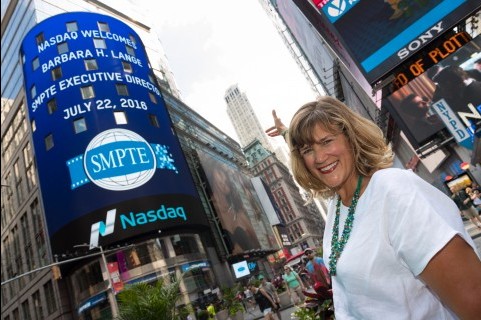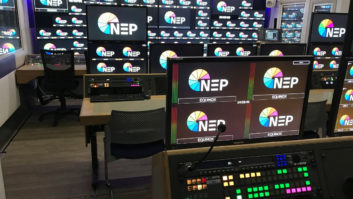
Barbara H Lange, SMPTE executive director
It began 100 years ago: the founding of an organisation to bring order to the nascent and growing motion picture industry.
Today, SMPTE operates under three pillars: Standards, Membership and Education. Not one is more important than the other, and not one survives without the other.
From 1916, when our mission was “the advancement in the theory and practice of motion picture engineering and the allied arts and sciences, the standardisation of the mechanisms and practices employed therein, and the maintenance of a high professional standing among its members”, to today, where SMPTE advances the art, science and craft of the image, sound and metadata ecosystem, globally, we fundamentally care about the quality of the motion image.
We have evolved, first through the understanding of the motion picture film landscape to now being instrumental in the development of sound and colour and widescreen applications. We have laid the foundation for a growing television industry from standard black-and-white images to beautiful full colour, and from standard definition to high definition and now ultra-high definition.
With a full-blown business model, the advent of the internet and ubiquitous mobile devices, the media and entertainment industry has exploded in ways our founders could never have imagined. Through it all, there have been workflow and production technology advancements that have been no less than awe-inspiring.
From our founding, we were all about setting standards. On 24 July 1916, at the first meeting of the Society of Motion Picture Engineers, Secretary of the US National Bureau of Standards, Henry Hubbard, spoke. Of course, being a standards guy, he was somewhat biased. Still, it is amazing to read his words, a century later, to hear how true they ring today.
“Interchangeability of parts is an important principle of standardisation, but more important is this implication that a true standardisation is the consensus of the best as far as that is practically attainable. To bring things to a dead level of uniformity at an arbitrarily fixed value is not standardisation at all.
Standardisation means and implies an ideal to be realised. Ideal standards, therefore, involve searching investigations so that they may be based upon scientific principles rather than on empirical judgment. In many cases, even yet, tentative standards alone are possible. Standardisation is at its best only when each magnitude of property or dimension is found by theory and tested to be the most fit for its use.
Such standardisation is a continuous development, not a thing to begin with but to arrive at. Like the bark of a tree, standardisation may bound progress but must not limit growth. Inflexible standards are liable to retard progress so that we must keep before us the ideal that at any time the standards must be the consensus of the best, scientifically formulated.
Motion picture engineering presents a splendid field for standardisation. The need is obvious, for your machines and films travel to all parts of the world, and the demands of human safety, human vision and comfort are common to all men in all lands. An ideal picture presentation for one is an ideal for others, since human nature is much the same the world over, and since mother nature standardised the human eye ages ago.
Co-operation is implied in the fact that you are organised. Stable standardisation is that in which all concerned are represented, and their interests regarded: engineer, maker and user. To overlook any factor is to vitiate the standardisation, as time will show. It is the business of the engineer to bridge the gap between the maker and user. The user, however, is the final dictator in standardisation, and his satisfaction is a practical test of quality.
It is wise to recognise this fact at the outset and secure the continued co-operation of the engineer, maker, and user.”
Our history demonstrates the tremendous ingenuity behind the rapid evolution of the motion-imaging field, and it suggests that our second century will be quite different from our first. As the media industry evolves, new entrants are challenging every aspect of the media workflow, from technology tools to business models.
Every step along the media chain is changing, and SMPTE is taking advantage of its centennial year to ensure that it continues to provide the valuable leadership and guidance – and standards that are fundamental to ongoing interoperability – that enables the industry to grow and thrive.
As we celebrate our centennial this year, we invite IBC2016 guests to join in the revelry and share a piece of birthday cake with us at the SMPTE stand. We have accomplished a great deal in the past 100 years, and the past year has been remarkable for advancing SMPTE’s standards, education and membership. We look forward to showcasing these achievements, and our hopes and goals for the future of the motion-imaging field.







